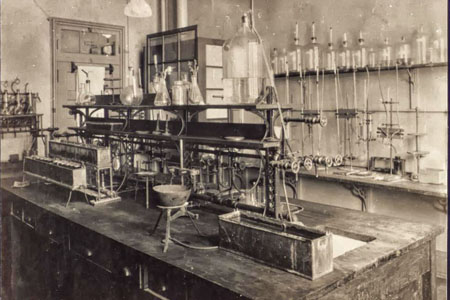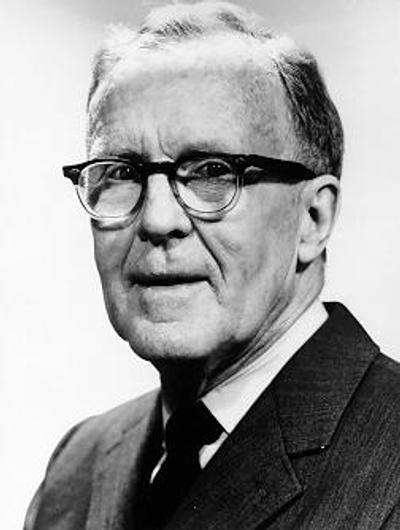Neuroscience is the study of the structure and function of the nervous system. It includes a number of subfields such as neuroanatomy, neurochemistry, neuropharmacology, neurophysiology and the study of brain mechanisms in behaviour (neuroethology, neuropsychology, psychobiology and psychopharmacology). In addition, the medical fields of neurology, neurosurgery and psychiatry are closely related to that of neuroscience.
Synaptic Transmission
Anatomical investigations of the nervous system have revealed the existence of specialized cells or neurons, which occur in vast numbers, in a great variety of shapes, sizes and functions, and form interconnected systems of enormous complexity. A British scientist, C.S. Sherrington, first understood that one neuron can influence the activity of a second neuron primarily via a specialized area of contact, which he referred to as a synapse. Subsequent work has revealed that synaptic transmission is usually the result of the release of a chemical substance (a neurohumor or neurotransmitter) which acts on specialized macromolecules (receptors) located in the membrane of the recipient neuron. It is of historical interest that some essential features of this concept were originally proposed in two papers published by a Canadian, F.H. Scott, in 1905 and 1906. However, Scott's ideas were too far in advance of the times and were ignored. The chemical nature of synaptic transmission did not become generally accepted until several decades later.
Modern research has shown that there are many chemically distinctive neurotransmitters. As a result, it is possible to alter the operation of specific types of synapses by the administration of drugs that alter the release or the effect of specific neurotransmitters. Great practical importance attaches to this fact since it makes possible the pharmacological treatment of disorders of the nervous system. It also provides the basis for the widespread non-medical use of drugs that alter various aspects of the brain's function in a selective manner.
Development of Neuroscience in Canada
The establishment of the Montreal Neurological Institute (MNI) at McGill University in 1934 with Wilder Penfield as its first director had a major effect on the development of neuroscience in Canada. The MNI, together with related departments at McGill and Université de Montréal made Montreal known worldwide for research and teaching in neuroscience and for the study and treatment of disorders of the nervous system. Scientists and physicians trained in Montreal, and subsequently established eminent careers elsewhere in Canada and the world. For example, David H. Hubel, a Canadian-born US citizen who was educated at McGill University and subsequently took up a position at Harvard University in Boston, was awarded the Nobel Prize in 1981 for his studies on brain mechanisms in vision. (See also Nobel Prizes and Canada.)
The MNI became especially well known for the advances made by Wilder Penfield and Herbert Jasper in the diagnosis, classification and treatment of epilepsy. The identification of the role of gamma-aminobutyric acid (GABA), now believed to be the major inhibitory transmitter in the brain with a role in conditions as diverse as epilepsy and in the effect of anti-anxiety drugs, was made at the MNI by A.W. Bazemore, Kenneth Allan Caldwell Elliott and E. Florey in 1957. The discoveries that Parkinson's disease was due to a deficiency of dopamine, an important neurotransmitter, and that the symptoms of the disease could be dramatically reversed by treatment with L-dopa, a compound from which the brain can manufacture dopamine, were made almost simultaneously in 1960-62 by André Barbeau, G.F. Murphy and Theodore Lionel Sourkes in Montreal and by O. Hornykiewicz and his colleagues in Vienna.
Work by H. Jasper, K. Krnjevic, H. MacIntosh and Juda Hirsch Quastel of McGill University and J. Szerb of Dalhousie University provided much of the basis of our present understanding of the action of another neurotransmitter, acetylcholine, in the brain. This work has recently assumed considerable practical importance as a result of the demonstration by British and American investigators that Alzheimer's disease is associated with a severe loss of acetylcholine-containing neurons in the brain.
Brain Behaviour Research
The establishment of brain behaviour research in Canada was due, in large part, to Donald Olding Hebb of McGill University. Work in Hebb's laboratory demonstrated the important role played by ordinary environmental stimulation in the development and maintenance of normal brain function. One of Hebb's students, Brenda Milner, carried out a series of studies at the MNI which demonstrated that localized injuries in different parts of the cerebral cortex produced quite specific impairments in psychological functions. In 1953 James Olds and Peter M. Milner, working in Hebb's laboratory, discovered that animals would voluntarily deliver electrical stimulation to certain parts of their own brain when enabled to do so by means of an implanted electrode. It is widely believed that this phenomenon establishes that activity of specific brain circuits is related to motivation and pleasure.
Research in neuroscience is undergoing an explosive development everywhere in the developed world. Every large Canadian university has programs in neuroscience fields in several academic departments. New technology such as computerized tomography, magnetic resonance imaging and positron-emission tomography now permit noninvasive investigation of the living human nervous system at a level of detail which was unimaginable a few years ago. It is reasonable to expect great improvements in our understanding of the nervous system and our ability to treat diseases of the nervous system in the coming decades.

 Share on Facebook
Share on Facebook Share on X
Share on X Share by Email
Share by Email Share on Google Classroom
Share on Google Classroom











